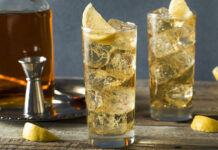Tap into consumer cravings with the right range of treats

THE line between pub and restaurant has continued to blur in recent years, with many operators of traditionally drinks-focused venues turning their hand to food. And so, it raises the question: is there still a place for bar snacks, such as crisps, in Scotland’s pubs?
The answer is a resounding yes from food firms, which stated that consumers still seek out snacks when frequenting the on-trade.
Ever-sophisticated consumer tastes have led to a ‘premiumisation’ of snacks.
Matt Collins, trading director at McCoy’s and Butterkist popcorn parent firm KP Snacks, described the UK as “a nation of snackers”.
Citing research data from Mintel, he said that a survey found that almost everybody (96%) snacks, with close to seven in ten snacking at least once a day.
With many choosing to snack while they are out – including when frequenting their local – it’s important that operators stock a range of snacks, especially crisps, according to Collins.
Cover all consumer needs: customers are looking for choice, from ‘big eat’ crisps to lighter options. Nuts and popcorn are also key considerations.
– KP Snacks.
This was echoed by Katy Hamblin, marketing manager of Pipers Crisps, who said premium potato-based snacks “are currently one of the best performing types of snack, having almost doubled penetration in the on-trade in less than five years”.
“Ever-sophisticated consumer tastes have led outlets to premiumise their food menus, enhance flavours and improve provenance,” she said.
“This trend has also driven the ‘premiumisation’ of snacks and is the reason behind the huge sales growth in this category.
Using the bar to your advantage: consumers looking to purchase a snack are extremely impulsive – ensure your range is well displayed behind the bar.
– KP Snacks.
“They also represent a significant advantage over ‘standard’ and ‘value’ crisps in terms of their rate of sale and price/margin; premium crisps command around a 30% price premium over quality mainstream products. These figures send a clear message to operators: premium crisps offer a great opportunity to grow sales and increase margins by meeting consumer demand for greater menu sophistication and food provenance.”
However, like many other food and drink sectors, health is an important consideration too, according to Collins of KP Snacks.
He said: “Consumers are becoming more conscious of what they are consuming and they want products that are better for them – and better for the environment.”
Offering snacks which are free from certain foodstuffs, such as gluten, is another important consideration, reckons Hamblin of Pipers Crisps.
The free-from sector continues to grow and suitable products should be part of a snacks range.
“The free-from sector continues to grow strongly in the UK and suitable products should definitely be part of the choice [of snacks] that is offered,” she said.
“According to Coeliac UK, research shows that Coeliac Disease (an intolerance to gluten) affects one in 100 people in the UK; however, only 30% of people with the condition are clinically diagnosed.
“A gluten-free diet is the only treatment for Coeliac Disease… so it’s important to carry more than just a token range of gluten-free options.”
A gluten-free diet is the only treatment for Coeliac Disease, so it’s important to carry more than just a token range of gluten-free snacks.
– Pipers Crisps.
Collins of KP Snacks also urged operators to “cover all consumer needs” when curating an up to date snacks range.
He explained that from ‘big eat’ crisps to lighter options, choice is key – and other snacks such as nuts and popcorn should also be included in a modern range of snacks.
Premium snacks: the trend has crossed over from the dining sector and consumers are willing to pay more for a quality product in the on-trade.
– Pipers Crisps.



















